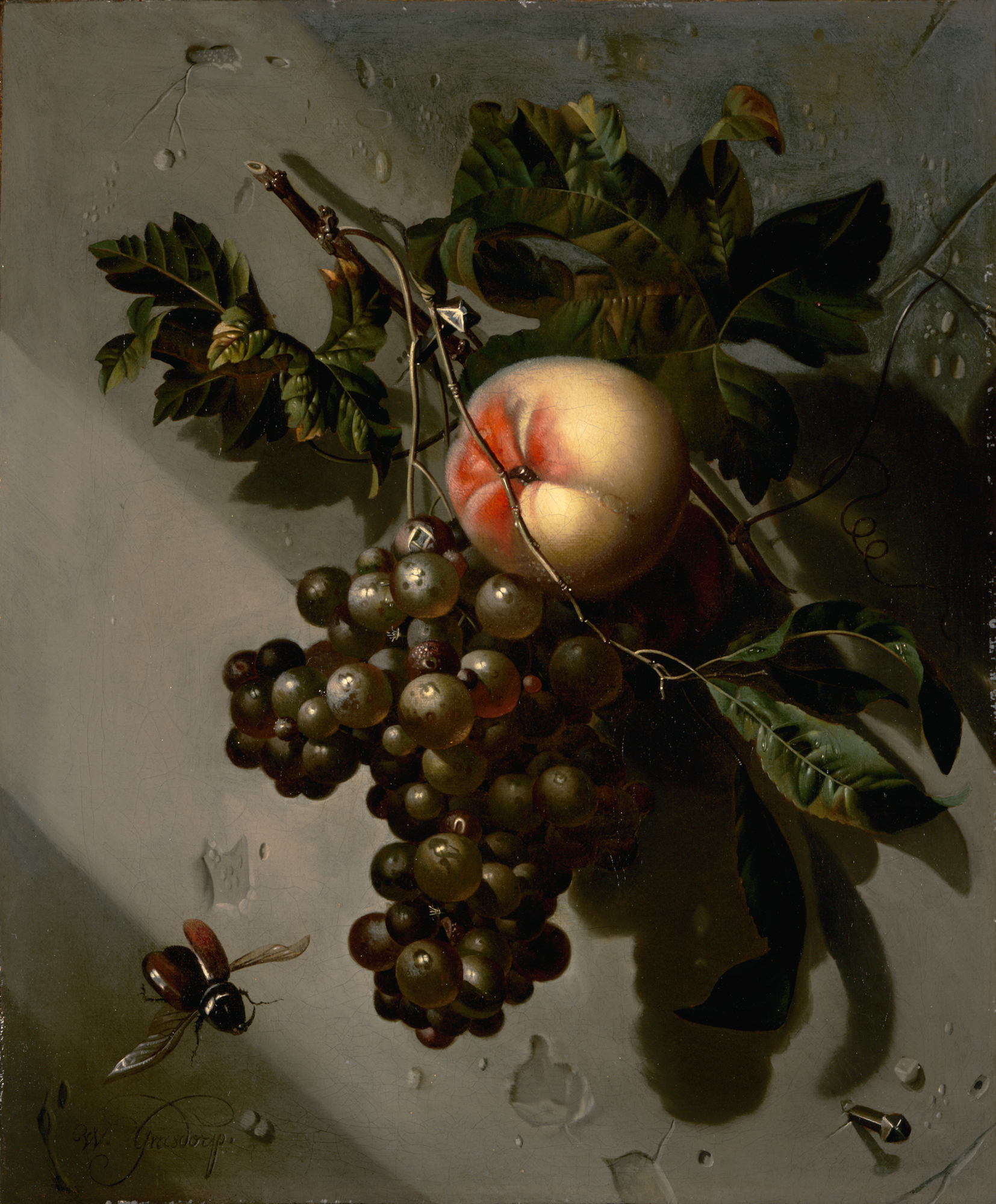WILLEM GRASDORP (Zwolle 1678 – Amsterdam 1723)
Still life with Grapes and a Peach
signed W. Grasdorp. in the lower left
oil on canvas
15 ⅜ x 12 ⅝ inches (39 x 32 cm)
PROVENANCE
Alfred Brod Gallery, London, Spring Exhibition, 1960
Private Collection, England
Sale, Christie’s, London, December 2, 1983, lot 97
Charles Roelofs, Amsterdam
Private Collection, Germany
Otto Naumann, Ltd., New York
LITERATURE
Peter C. Sutton, Marjorie E. Wieseman, “Willem Grasdorp” in Old Master Paintings, Otto Naumann, Ltd., New York, 1999, pp. 32-33, no. 9, illustrated
A still life with a bunch of grapes and a peach has been nailed to a chipped and blistered plaster wall. A strong shaft of light falling from the upper left illuminates the scene. A June bug is caught in mid-flight at the lower left, while a second square-headed nail is imbedded in the wall at the lower right.
Born in Zwolle in 1678, the son of an architectural and genre painter Jan Grasdorp (1651–1693; on the father, see F.A. Hoefer, in Oud-Holland, vol. 35 [1917], pp. 149ff.), Willem, according to Arnold Houbraken, was apprenticed in 1697 to the Hamburg still life painter Ernst Stuven (c. 1660–1712), who is purported to have treated him badly and provoked a lawsuit. Grasdorp subsequently became a specialist in flower and fruit still lifes. Little is known of his life. His only recorded dated work was of 1710 (see U. Thieme & F. Becker, Allgemeines Lexikon der bildenden Künstler, etc. 1907–50, English ed., vol. 14, p. 525) and he is known to have exhibited two fruit still lifes in the Amsterdam Town Hall the following year. In the Herzog Anton Ulrich Museum, Braunschweig (no. 450), there is another still life of grapes, peaches, and flowers by the artist; compare also the grape still life in the Sale Lucerne (Fisher), June 21, 1974, no. 635, ill., and the still life of grapes, a gourd and a pomegranate in the Spencer-Churchill Sale, London (Christie’s), February 25, 1966. Grasdorp’s compositions, especially his flower pieces, have been likened to those of the women painters, Rachel Ruysch (1664–1750) and Maria van Oosterwijk (1630–1693), while his hard and exacting execution recalls the polish of Abraham Mignon (1640–1679) and Elias van den Broeck (c. 1650–1708). The last mentioned provides the closest stylistic parallels. While Grasdorp was active in the eighteenth century, his art is entirely grounded in the pictorial conventions of the previous century. He was buried in Amsterdam on May 28, 1728.
